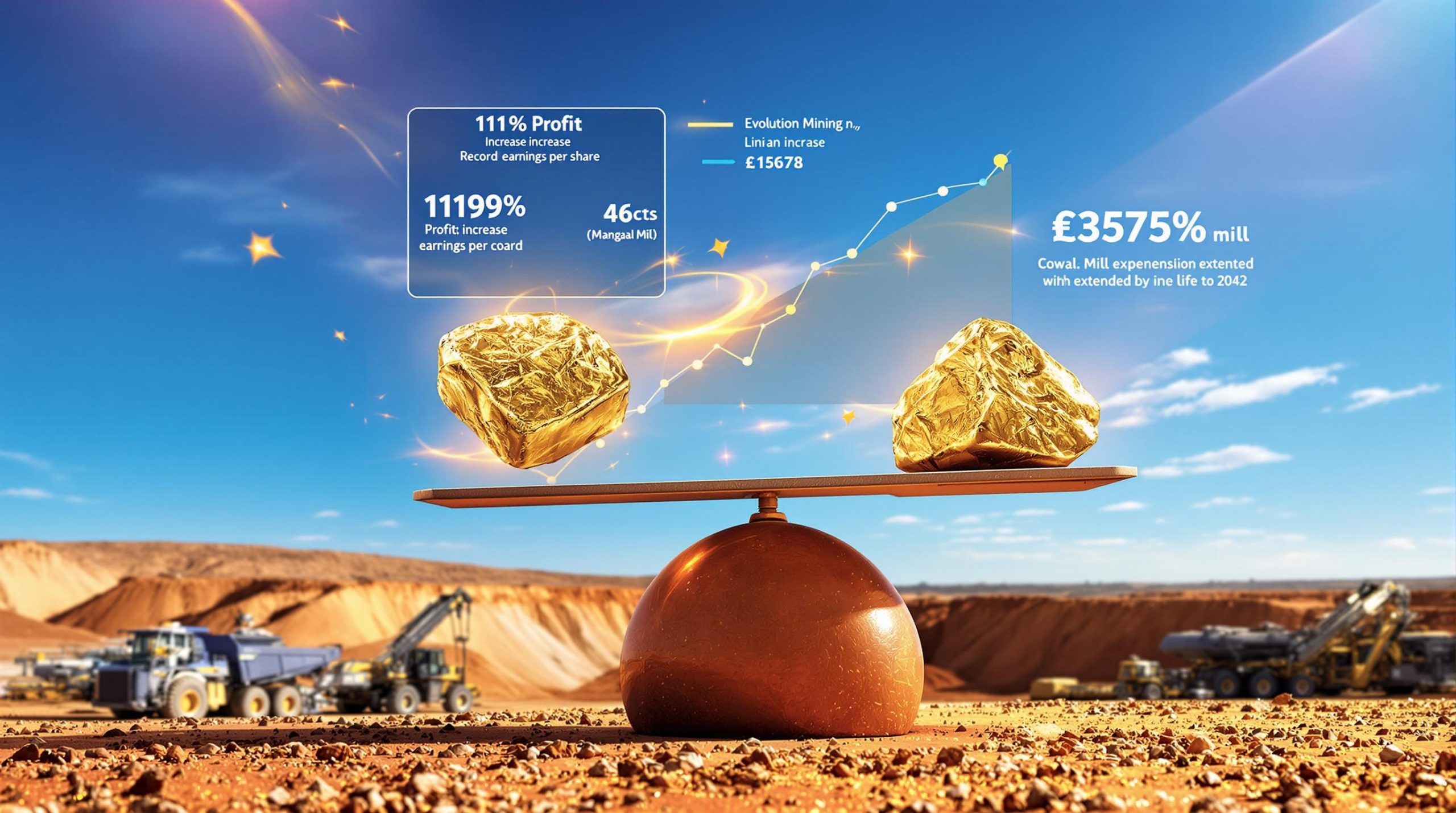How Is Rio Tinto Strengthening Its Lithium Position in Quebec?
Rio Tinto is significantly expanding its presence in Quebec's James Bay lithium corridor through an enhanced partnership with junior explorer Azimut Exploration. The mining giant has secured exclusive lithium and related mineral rights on the Wabamisk East property, adding to its existing options over the Corvet and Kaanaayaa properties. This strategic consolidation creates what the companies are calling the "CKW Properties" cluster, positioning Rio Tinto as an increasingly important player in North America's critical minerals landscape.
The move represents a calculated expansion in a region rapidly emerging as one of the most promising lithium districts outside of established producers in Australia and South America. With a combined land package exceeding 600 km², Rio Tinto is building a district-scale opportunity in a premier mining jurisdiction.
According to Azimut Exploration, "The option on the Wabamisk East Property is for lithium and related minerals only. This new transaction aims to generate substantial value by advancing the project's previously identified lithium potential."
The Strategic Value of the James Bay Region
The James Bay region of Quebec has emerged as one of North America's most promising lithium districts, with multiple significant discoveries and development projects. This area is particularly attractive due to:
- Proximity to North American battery manufacturing facilities
- Access to renewable hydroelectric power
- Established mining infrastructure
- Supportive provincial mining policies
- Growing demand for regionally-sourced battery materials
The region's hard-rock lithium deposits, primarily in the form of spodumene-bearing pegmatites, are increasingly valuable as battery manufacturers seek secure, ethical supply chains outside of traditionally dominant producers. Quebec's deposits benefit from high-grade mineralization, making them economically competitive despite higher processing costs compared to Argentina lithium insights and other brine operations.
What Are the Terms of the Rio Tinto-Azimut Agreement?
The partnership between Rio Tinto and Azimut represents one of the more substantial exploration commitments in Quebec's lithium sector, with a potential total investment reaching C$85 million across two phases.
First-Phase Earning Structure
Under the revised option agreement, Rio Tinto Exploration Canada can earn a 50% interest in the CKW Properties by:
- Investing C$25 million in exploration expenditures
- Making C$1.7 million in cash payments to Azimut
- Completing these requirements by the end of 2028
Azimut will maintain its position as the operator during this initial phase, providing continuity in exploration activities and local expertise. This arrangement allows the junior partner to guide early-stage exploration while leveraging Rio Tinto's financial resources.
Current Progress and Near-Term Commitments
The partnership has already made substantial progress toward these targets:
- Approximately C$1.85 million in exploration expenditures completed
- C$800,000 in cash payments already made to Azimut
- A further C$1.15 million in exploration spending required by the end of 2025
This structured approach with defined milestones creates accountability while allowing sufficient flexibility for exploration programs to evolve based on results.
Second-Phase Earning Structure
Following the initial 50% interest, Rio Tinto has the option to increase its stake to 70% by:
- Investing an additional C$60 million over a five-year period
- Assuming operational control of the project at this stage
This second phase represents the bulk of the financial commitment and would likely coincide with more advanced exploration and potential resource definition drilling.
Production Financing Provisions
A notable aspect of the agreement is Azimut's carried interest provision, which allows the junior partner to:
- Receive project financing through a secured loan from Rio Tinto
- Exchange 5% of project equity for this financing
- Maintain a 25% funded stake through to production
This structure provides Azimut with a clear path to production participation without the capital raising challenges typically faced by junior miners. The carried interest model is particularly valuable in the current challenging financing environment for junior exploration companies.
What Makes the Wabamisk East Property Significant?
The Lithos Target Discovery
The Wabamisk East property hosts the Lithos target, an emerging spodumene pegmatite field with promising early exploration results:
- Surface samples returning up to 7.43% lithium oxide
- A mineralized footprint spanning approximately 4 km²
- Open expansion potential in all directions
The 7.43% Li₂O grade is particularly notable as commercial lithium operations typically mine material grading between 1-2% Li₂O. While surface samples are not necessarily representative of the entire deposit, such high-grade material provides encouragement for further exploration.
Technical note: Spodumene (LiAlSi₂O₆) is the most economically significant hard-rock lithium mineral, valued for its relatively high lithium content and established processing routes to battery-grade lithium chemicals.
Rights Structure and Other Mineral Potential
An important aspect of the agreement is the selective nature of the mineral rights:
- Rio Tinto's option covers only lithium and related minerals on Wabamisk East
- Azimut retains gold and copper rights across the broader Wabamisk property
- The Fortin gold-antimony zone remains under Azimut's control
This structure allows both companies to focus on their respective areas of expertise while maximizing the property's overall resource potential. Such arrangements are becoming increasingly common in mineral exploration, allowing specialized expertise to be applied to different commodity types within the same land package.
How Do the Corvet and Kaanaayaa Properties Enhance the Portfolio?
Exploration Progress and Potential
The Corvet and Kaanaayaa properties, which were part of the original option agreement, have also shown encouraging results from 2024 prospecting campaigns:
- Identification of highly differentiated pegmatite bodies
- Multi-element geochemical anomalies indicating lithium potential
- Combined land package exceeding 600 km²
The presence of "highly differentiated pegmatites" is geologically significant, as such formations often represent the most evolved pegmatites with the highest potential for lithium mineralization. Multi-element anomalies typically include pathfinder elements such as cesium, tantalum, and rubidium, which frequently accompany lithium in evolved pegmatite systems.
Strategic Land Position
These properties provide Rio Tinto with a substantial exploration footprint in a region that is rapidly emerging as a globally significant lithium district. The consolidated CKW Properties create:
- Multiple exploration targets across different geological settings
- Operational synergies between nearby project areas
- A district-scale opportunity in a premier mining jurisdiction
The scale of the land package allows for systematic exploration across various geological environments, increasing the probability of significant discoveries. The clustering of properties also creates logistical efficiencies and the potential for centralized processing facilities should multiple deposits be discovered.
How Does This Fit Into Rio Tinto's Broader Lithium Strategy?
Growing North American Lithium Portfolio
The expanded Azimut partnership represents part of Rio Tinto's broader strategic push into lithium, particularly in North America. The company has established several key positions in the battery metals space:
- Stake in the Whabouchi lithium deposit through ownership in Nemaska Lithium
- Lithium demonstration plant in Sorel-Tracy, Quebec
- Exploration activities across multiple prospective regions
Rio Tinto's investment in both exploration (CKW Properties) and development-stage assets (Whabouchi) demonstrates a multi-pronged approach to building its lithium business. The Sorel-Tracy demonstration plant provides technological capabilities that could eventually be applied to processing material from these Quebec projects.
Vertical Integration Opportunities
Rio Tinto's increasing lithium interests align with global lithium insights and trends toward securing battery material supply chains:
- Potential to develop mine-to-battery material capabilities
- Strategic positioning near North American manufacturing centers
- Reduced geopolitical risk compared to overseas supply
The company appears to be positioning itself to potentially offer an integrated North American lithium supply chain, from mineral extraction through to processed battery materials. This approach parallels its existing vertically integrated aluminum business, where Rio Tinto controls bauxite mines, alumina refineries, and aluminum smelters.
Diversification of Critical Mineral Assets
For Rio Tinto, traditionally known for its iron ore, aluminum, and copper operations, the lithium push represents an important diversification into materials critical minerals transition:
- Balancing traditional mining commodities with future-focused materials
- Leveraging existing operational expertise in hard-rock mining
- Building positions in markets with strong long-term demand fundamentals
The move into lithium provides exposure to the rapid growth in electric vehicle adoption and energy storage systems, potentially offsetting cyclicality in traditional mining commodities. Rio Tinto's expertise in large-scale hard-rock mining operations is directly applicable to developing spodumene-bearing pegmatite deposits.
What Does This Mean for Quebec's Lithium Industry?
Building a Regional Battery Materials Hub
Quebec has positioned itself as a key jurisdiction for lithium development in North America, with several advantages:
- Clean hydroelectric power reducing carbon footprint of operations
- Provincial government support for critical minerals development
- Proximity to emerging battery manufacturing capacity
- Established mining culture and skilled workforce
The province's Plan for the Development of Critical Minerals (2020) specifically targets lithium as a strategic resource, providing policy support for new projects. The recent announcement of Northvolt's battery manufacturing facility in Montreal further strengthens Quebec's position in the battery supply chain.
Carbon advantage: Quebec's hydroelectric power provides among the lowest carbon footprints for hard-rock lithium mining globally, addressing growing consumer and regulatory demands for environmentally responsible battery materials.
Investment Implications
Rio Tinto's expanded commitment to Quebec lithium exploration signals growing confidence in the region's potential:
- Major mining company validation of the geological potential
- Increased exploration investment across the district
- Potential for accelerated development timelines with major company backing
The involvement of a major mining house like Rio Tinto typically attracts further investment to a region, as it provides third-party validation of geological potential. Junior companies operating in the same district may benefit from this increased attention and investment interest.
What's Next for the Rio Tinto-Azimut Partnership?
Upcoming Exploration Activities
The partnership has outlined an aggressive exploration program to advance the CKW Properties:
- Detailed geological mapping across priority target areas
- Expanded surface sampling programs
- Drill testing of the most promising lithium targets
- Continued prospecting to identify new pegmatite fields
The immediate focus will likely be on the Lithos target at Wabamisk East, given the high-grade surface samples already identified. The C$1.15 million exploration commitment by the end of 2025 will fund the next phase of this work.
Development Timeline Considerations
While still in the exploration phase, the involvement of a major mining company like Rio Tinto could accelerate development timelines:
- Access to significant technical expertise and resources
- Streamlined decision-making for capital deployment
- Potential fast-tracking of promising discoveries
Typical development timelines for lithium projects range from 7-10 years from discovery to production. However, with Rio Tinto's resources and the growing strategic importance of domestic lithium supply, successful discoveries could potentially move more quickly through the development pipeline.
FAQ: Rio Tinto's Quebec Lithium Strategy
How does this agreement compare to other lithium exploration partnerships?
The Rio Tinto-Azimut agreement stands out for its substantial exploration commitment (C$85 million total potential investment) and the carried interest provision that protects the junior partner's position through to production. Many similar deals in the sector offer less favorable terms for the junior partner or smaller overall investment commitments.
What are the key geological indicators that make this region prospective for lithium?
The James Bay region hosts numerous lithium-bearing pegmatites with spodumene mineralization, the preferred hard-rock source of lithium. The geological setting features the right combination of source rocks, structural controls, and mineralization styles typical of world-class lithium pegmatite districts.
How does Quebec's lithium potential compare to other global lithium sources?
Quebec's hard-rock lithium resources complement the brine-based resources found in South America and Australia lithium innovations from established pegmatite operations. While currently representing a smaller portion of global production, Quebec's resources benefit from high-grade mineralization, clean energy access, and proximity to North American markets.
What potential obstacles might affect development timelines?
As with any mining development, potential obstacles include permitting timelines, community engagement requirements, technical complexities in mineral processing, and market conditions for lithium products. However, Quebec's supportive mining framework may mitigate some of these challenges compared to projects like the Thacker Pass lithium mine in Nevada.
Investor perspective: The Rio Tinto-Azimut partnership balances the exploration expertise of a specialized junior with the financial and technical resources of a major, potentially reducing both timeline and execution risks compared to standalone junior developments.
What makes the CKW Properties cluster particularly valuable?
The cluster approach provides multiple exploration targets, risk diversification, and potential operational synergies. Rather than relying on a single property, the partnership has multiple opportunities to make significant discoveries, increasing the probability of project success.
How might changing lithium prices affect the partnership's plans?
While short-term lithium price volatility may impact the pace of exploration, Rio Tinto's long-term strategic interest in building a lithium business suggests continued commitment regardless of temporary market fluctuations. Major mining companies typically make investment decisions based on long-cycle fundamentals rather than short-term price movements.
Ready to Capitalise on the Next Major Mineral Discovery?
Discover investment opportunities before the market with Discovery Alert's proprietary Discovery IQ model, which delivers real-time alerts on significant ASX mineral announcements across multiple commodities, including lithium. Visit the Discovery Alert discoveries page to understand why major mineral discoveries can lead to exceptional market returns and begin your 30-day free trial today.




